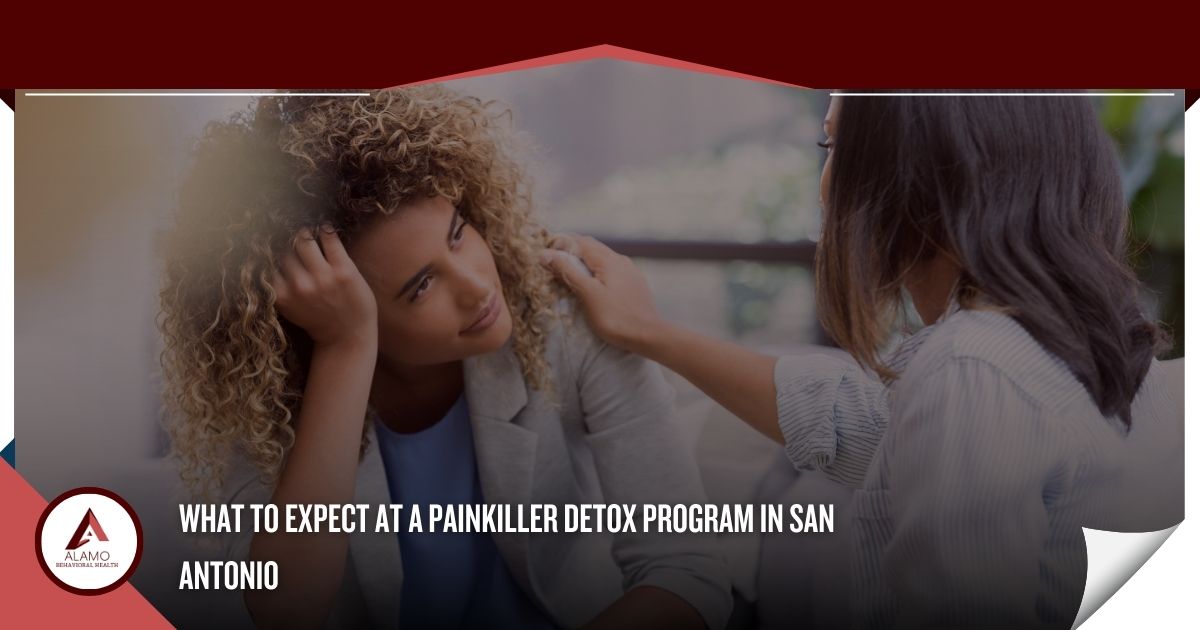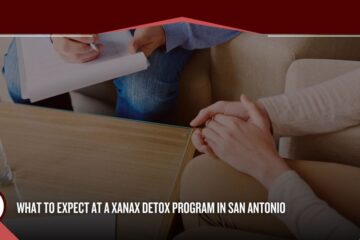When you’re addicted to painkillers, beginning the journey to break free can be daunting but also transformative. A painkiller detox program is a structured pathway toward recovery. At our painkiller detox in San Antonio, you’re equipped with the support and resources to navigate withdrawal. Our detox programs provide a comprehensive approach tailored to your needs. The ultimate goal is to help you reclaim control over your life when you’re struggling with painkillers.
Prescription Painkiller Addiction
Also known as opioids, prescription painkillers are medications for alleviating moderate to severe pain. These medications attach to receptors in the brain, reducing pain perception. While they are effective for pain, they’re also very risky because of the potential for dependence and addiction.
Commonly used prescription painkillers include:
- Oxycodone (OxyContin, Percocet)
- Hydrocodone (Vicodin, Norco)
- Morphine
- Codeine
- Fentanyl
Along with pain relief, prescription medications like the ones above have other effects.
- Euphoria and relaxation are the primary reasons they lead to abuse.
- Respiratory depression, with significantly slowed breathing. In cases of overdose, breathing can slow so much that it becomes life-threatening.
- Drowsiness and sedation, as well as impaired cognitive and motor functions.
- Constipation due to the effects on the gastrointestinal tract.
- Tolerance where higher doses are needed for the same effects.
- Physical and psychological dependence.
When someone is prescribed opioids, they have to use them carefully to minimize the risk of adverse and dangerous effects.
Opioid Dependence vs. Addiction
Opioid dependence is a physiological state. When you’re dependent on opioids, your body is adjusted to their presence. If you’re dependent on prescription painkillers, you might experience withdrawal symptoms when you stop.
Even when someone takes opioids exactly as prescribed, dependence can occur.
You can be dependent on opioids and need help managing withdrawal even if you aren’t addicted. Addiction is a condition where you engage in compulsive drug-seeking behaviors and no longer have control over your use.
Opioid addiction is also called an opioid use disorder. Addiction involves a complicated interaction of factors that are physical, biological, social and psychological. If you’re addicted to prescription pain medications, you might continue using them regardless of the consequences and be unable to cut back or stop on your own.
Opioid Withdrawal
There are a set of symptoms that occur if you’re physically dependent on opioids and reduce your dosage or stop using them. Symptoms of opioid withdrawal can include:
- Flu-like symptoms include muscle and joint pain, runny nose, sweating, fever and chills.
- GI symptoms: Nausea, abdominal cramping, vomiting and diarrhea may occur during withdrawal from painkillers.
- Mental symptoms: Psychological symptoms can include anxiety, irritability, mood swings, restlessness and insomnia.
- Dilated pupils: Pupils may be large and very sensitive to light.
- Goosebumps: Also known as gooseflesh, this is a common symptom of painkiller withdrawal.
- Cravings: One of the primary signs of withdrawal is intense opioid cravings, and they can last for weeks or months after the last use.
Other symptoms of withdrawal from prescription painkillers include yawning, elevated heart rate, and high blood pressure.
The symptoms usually peak within 1-3 days after the last use of opioids and gradually get better for five to 10 days.
The Role of a Medically Managed Painkiller Detox
Opioid withdrawal can be extremely distressing and uncomfortable. Complications like electrolyte balances and dehydration can occur. There’s also a high risk of relapse during this time because of the intensity of cravings.
These factors highlight the importance of a professional painkiller detox in San Antonio.
During a medically managed painkiller detox, also known as medically supervised withdrawal, there’s a structured process. You go through painkiller detox under the supervision of medical professionals. The approach uses medications and medical monitoring to help reduce withdrawal symptoms and help you stay safe. You’re fully supported throughout the detox process.
What Happens During a Painkiller Detox
Some of the things you might anticipate in a painkiller detox treatment facility include:
- An initial assessment to evaluate your health. The evaluation considers your mental and physical health, history of substance use and other relevant factors. The assessment helps determine the best detox plan for you and the needed level of medical monitoring.
- Medications can be prescribed to help with withdrawal symptoms and cravings, making a smoother detox process. Medications in an opioid detox include methadone, buprenorphine and clonidine.
- Medical monitoring is done throughout the detox process. A team of addiction treatment and medical staff monitors vital signs. They manage complications or side effects that can occur to keep you safe.
- As well as medications and similar treatment options, during a painkiller detox, you receive supportive care to meet your needs holistically.
Once you complete a medically managed detox, you are likely to transition to further treatment. Detoxing safely is just the first step. Your complete addiction treatment plan might include a multifaceted approach with therapy, counseling and other support.
The benefits of a medical painkiller detox program include safety and comfort as well as comprehensive care. Your physical and psychological needs are considered, preparing you for ongoing support and treatment.
Research also shows people who go through medically managed detox are more likely to complete the process and engage in further treatment, improving recovery outcomes.
Learn More About our Painkiller Detox Program in San Antonio Today
A medically managed opioid detox is a crucial first step toward recovery. If you’d like to learn about a painkiller detox in San Antonio, contact our Alamo Behavioral Health team.
Our team provides a comprehensive, supportive environment tailored to each individual’s unique needs during this delicate time. We offer thorough assessments and medical monitoring, administering medications as needed. We can help you move through painkiller detox safely with the tools you need for recovery. Our programs serve as a gateway to support further treatment, preparing you for long-term sobriety. Reach out for more information.




